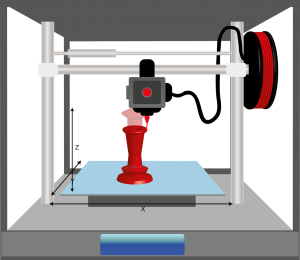
3D printers aren’t immune to faults. When properly used, they can build highly complex and detailed objects from raw material. A common problem from which 3D printers, suffer, however, is warping. Rather than featuring smooth and level surfaces, a printed object may feature warped surfaces. The good news is that warping, while common, is preventable.
Overview of Warping
Warping refers to a phenomenon in which a printed object develops a warped surface. 3D printers work by depositing layers of material on a bed. After building the initial bottom layer, the 3D printer will begin to work on the second layer and so on. If a layer isn’t completely flat, the printed object may warp.
Warping is also known as curling. When a printed object warps, its edges may curl upwards. From small to medium- and large-sized objects, all objects built by a 3D printer can suffer from warping or curling.
Common Causes of Warping
While there are several possible causes of warping, this phenomenon is typically the result of uneven cooling. Prior to being deposited, 3D printers heat the raw material so that it flows more easily out the nozzle. The raw material, of course, will begin to cool after being released. If part of the object’s layer cools more quickly — or otherwise at a different rate — than the rest of the layer, it can lead to warping.
Warping can also occur when the raw material is too hot. Even if it cools evenly, the hot material may contract in a way that causes it to warp. Although there are exceptions, most instances of warping are the result of uneven cooling or excessively hot material.
Preventing Warping
How do you prevent warping when using a 3D printer exactly? Setting the 3D printer to an appropriate temperature for the material with which it’s used will naturally lower the risk of warping. If the 3D printer is too hot, the material may melt and warp after being deposited. Different materials require a different temperature setting, so find the correct temperature for your respective material before using the 3D printer.
To promote even cooling, and therefore minimize the risk of warping, you may want to use a heated bed. Heated beds are characterized by the use of a heating element that keeps the deposited material warm. It ensures all areas of the material have an even and consistent temperature, which allows them to cool evenly.
Learn more about Monroe’s Additive Printing Service or get your parts printed now!
No tags for this post.
